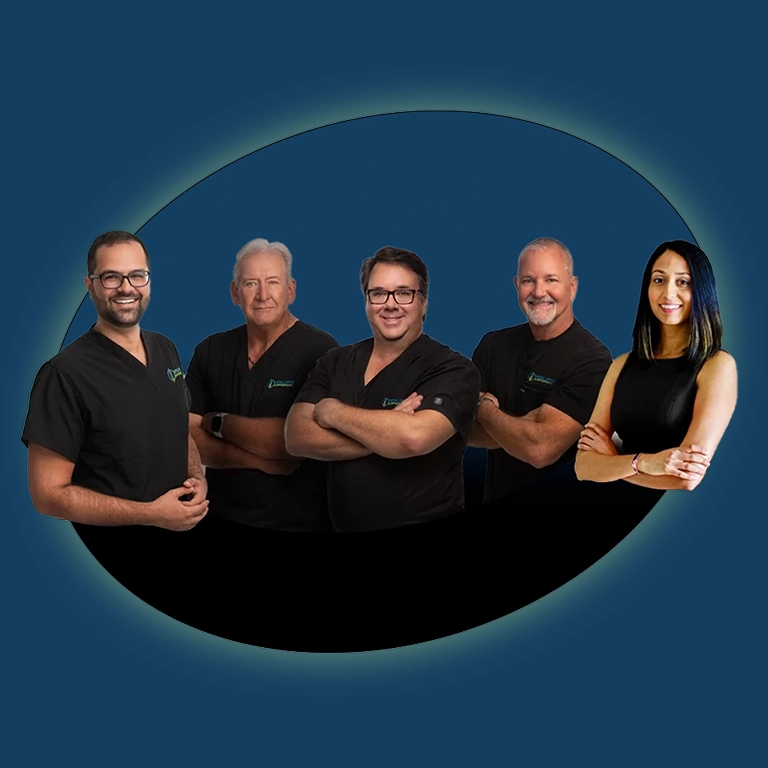Can Degenerated Spinal Discs Regenerate? Expert Insights & Treatments
Our Team
We are a team of highly specialized spine surgeons dedicated to pioneering the future of spine care.
Share:
Table Of Contents
- What Is Degenerative Disc Disease (DDD)?
- Why Spinal Discs Degenerate: A Structural Overview
- Can Types of Degenerated Discs Regenerate Naturally?
- Conventional Treatments: Symptom Relief vs Structural Repair
- Regenerative Medicine: How It Works (Stem Cells, PRP, Hydrogels)
- Evidence from Studies & Clinical Trials
- Real-World Case Studies & Outcomes
- Advantages & Limitations of Regenerative Therapies
- Who Is a Good Candidate?
- Risks, Costs & Recovery Timelines
- Cost of Disc Regeneration Therapy
- Why Choose Total Spine Wellness for Disc Regeneration?
- Frequently Asked Questions (FAQs)
- Ready to Explore Regenerative Options?
Many patients come to us asking: can spinal discs regenerate naturally, or can a degenerated disc regenerate with treatment?
If you’ve been sitting at a desk for years and feel that nagging lower back ache, it could be an early sign of disc degeneration. The truth is, spinal disc issues are common—especially with age or injury—but that doesn’t mean they’re untreatable.
If you’ve ever wondered, can spinal discs regenerate, you’re not alone. Our mission is to help you understand what’s happening inside your spine—and more importantly, what you can do about it. With today’s science-backed treatments, real healing is possible. You don’t have to live in pain.
What Is Degenerative Disc Disease?
Degenerative Disc Disease (DDD) isn’t actually a disease, but a condition where the discs between your vertebrae slowly wear down over time. These discs act like cushions or shock absorbers, allowing your spine to move smoothly and flex with ease. As they lose height, hydration, or structure—often due to aging, repetitive stress, or injury—it can lead to stiffness, chronic pain, and limited mobility.This raises a common question: can a degenerated disc regenerate, or is the damage permanent?
Key Symptoms of DDD:
- Chronic lower back or neck pain
- Pain that worsens with sitting, bending, or lifting
- Numbness or tingling in limbs
- Reduced range of motion
Common Causes:
- Aging (natural dehydration and loss of elasticity)
- Repetitive strain
- Poor posture
- Injury or trauma
For a more natural approach, check out our guide to the Best Natural Methods to Regenerate Spinal Discs.
Spinal discs act as cushions between your vertebrae, supporting movement and absorbing daily impact. When they begin to degenerate, symptoms like chronic back pain, stiffness, numbness, or radiating leg pain can start to interfere with daily life. The most common causes include aging, poor posture, repetitive strain, and injury.
But the question many people ask is: can spinal discs regenerate after years of wear and tear? With advances in regenerative medicine—like PRP (Platelet-Rich Plasma), stem cell therapy, and minimally invasive techniques—the outlook is far more promising.
These treatments don’t just relieve pain temporarily; they aim to repair the actual damage. So if you’re wondering can spinal discs regenerate through natural or clinical methods, the answer is yes—under the right conditions, many patients see real improvements in disc health, mobility, and long-term comfort. Book your consultation and start now!
Can Spinal Discs Regenerate Naturally? (What Science and Real Cases Show)
Degenerative Disc Disease (DDD) isn’t actually a disease, but a condition where the discs between your vertebrae slowly wear down over time. These discs act like cushions or shock absorbers, allowing your spine to move smoothly and flex with ease. As they lose height, hydration, or structure—often due to aging, repetitive stress, or injury—it can lead to stiffness, chronic pain, and limited mobility.This raises a common question: can a degenerated disc regenerate, or is the damage permanent?
Key Symptoms of DDD:
- Chronic lower back or neck pain
- Pain that worsens with sitting, bending, or lifting
- Numbness or tingling in limbs
- Reduced range of motion
Common Causes:
- Aging (natural dehydration and loss of elasticity)
- Repetitive strain
- Poor posture
- Injury or trauma
For a more natural approach, check out our guide to the Best Natural Methods to Regenerate Spinal Discs.
Spinal discs act as cushions between your vertebrae, supporting movement and absorbing daily impact. When they begin to degenerate, symptoms like chronic back pain, stiffness, numbness, or radiating leg pain can start to interfere with daily life. The most common causes include aging, poor posture, repetitive strain, and injury.
But the question many people ask is: can spinal discs regenerate after years of wear and tear? With advances in regenerative medicine—like PRP (Platelet-Rich Plasma), stem cell therapy, and minimally invasive techniques—the outlook is far more promising.
These treatments don’t just relieve pain temporarily; they aim to repair the actual damage. So if you’re wondering can spinal discs regenerate through natural or clinical methods, the answer is yes—under the right conditions, many patients see real improvements in disc health, mobility, and long-term comfort. Book your consultation and start now!
Why Spinal Discs Degenerate: A Structural Overview
To understand if spinal discs can regenerate, we need to look at how they’re built. Each disc has a tough outer layer (annulus fibrosus) and a gel-like center (nucleus pulposus). Over time, the center loses moisture, and the outer layer can weaken and tear more easily.
Degeneration Triggers:
- Loss of water content in the nucleus
- Micro-tears in the annulus
- Reduced nutrient supply through surrounding capillaries
- Inflammatory responses
These structural changes impact the disc’s ability to cushion and support the spine effectively.
How Disc Hydration Works (and Why It Matters)
Spinal discs are made up of nearly 80% water in early adulthood. Throughout the day they lose fluid due to load and reabsorb it during rest. This hydration cycle is what maintains disc height, flexibility, and cushioning. When discs lose their ability to rehydrate, stiffness and pain set in. Supporting hydration through movement, posture, and daily water intake is often the first step toward natural disc regeneration.
Can Types of Degenerated Discs Regenerate Naturally?
So can a degenerated disc regenerate without treatment? In some cases, yes—especially when damage is mild and the body has the right healing environment.
Natural Factors That Support Regeneration:
- Staying hydrated
- Proper spinal alignment
- Anti-inflammatory diets
- Daily movement and low-impact exercise
For more information, read our article on Disc Regeneration.
What “Regeneration” Really Means: Rehydration vs. Regrowth
Full regrowth of a severely degenerated disc is rare. What most patients experience as “regeneration” is actually improved hydration, flexibility, and reduced inflammation. This translates into less morning stiffness, fewer flare-ups, and better daily mobility. Setting clear expectations helps patients stay motivated and recognize meaningful progress, even if MRI images don’t show a “new disc.”
Conventional Treatments: Symptom Relief vs Structural Repair
Traditional treatments for DDD often focus on pain relief rather than regeneration. Common options include:
Symptom Management Methods:
- Physical therapy
- NSAIDs or pain relievers
- Corticosteroid injections
- Chiropractic adjustments
While these options may ease discomfort, they don’t reverse the damage or truly answer the question, “can spinal discs regenerate?” They help at the start, but rarely fix the root of the problem.
Regenerative Medicine: How It Works (Stem Cells, PRP, Hydrogels)
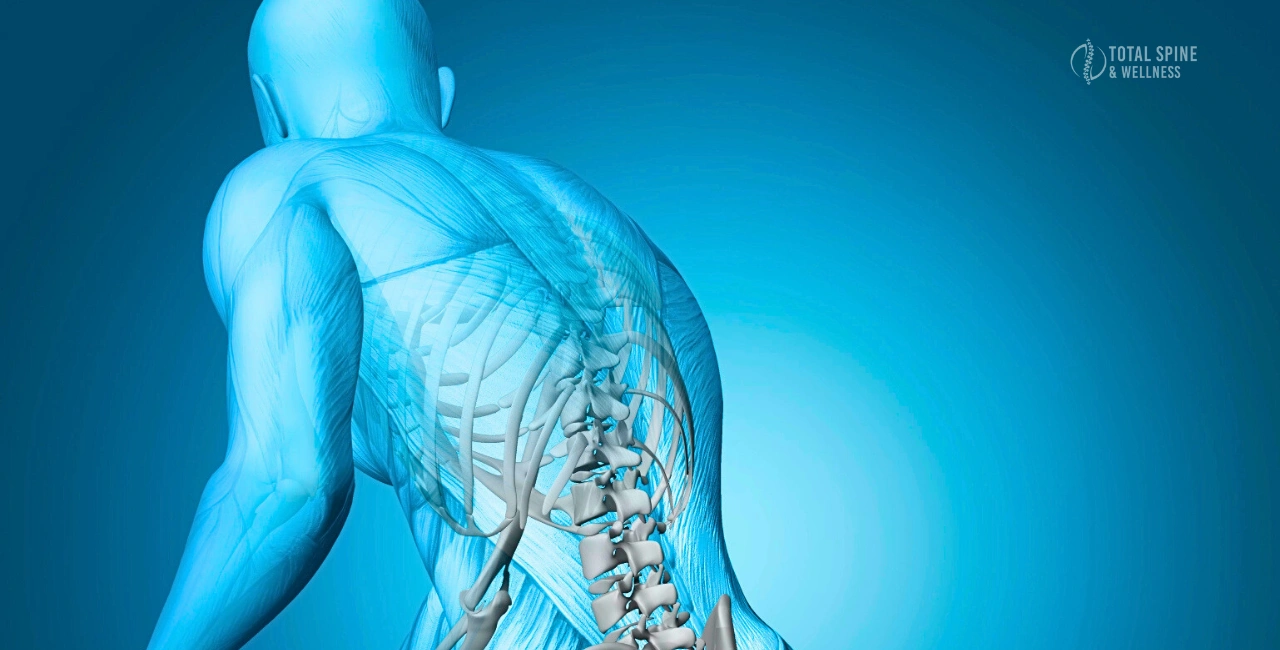
Here’s where regenerative medicine steps in. Treatments like stem cells, PRP, and hydrogels aim to repair damage—and answer the real question: can spinal discs regenerate?
Key Therapies:
For more information: Comprehensive Guide to Stem Cell Therapy.
- PRP Injections: Concentrated platelets from your blood stimulate healing in the disc.
- Hydrogels: Injectable gels that restore disc volume and hydration.
These treatments target the underlying structural issues—not just the symptoms—bringing us closer to answering can spinal discs regenerate with a “yes.”
Evidence from Studies & Clinical Trials
Scientific evidence is mounting in favor of regenerative therapy. Several clinical trials show promising results:
- A 2020 study published in Spine Journal demonstrated significant pain reduction and disc height restoration after stem cell therapy.
- A 2022 NIH-funded trial showed that PRP injections improved pain and function in patients with early-stage disc degeneration.
According to researchers, the disc’s regenerative potential depends largely on early intervention and the health of surrounding tissues.
Real-World Case Studies & Outcomes
At Total Spine Wellness, we’ve seen real-life examples of patients who experienced meaningful improvement with regenerative medicine.
Case Example:
- Patient: Male, 45, diagnosed with lumbar DDD
- Treatment: PRP + Stem Cell injections
- Results: 70% pain reduction, increased disc hydration on MRI within 6 months
These outcomes show that not only can spinal discs regenerate under the right conditions, but they can also lead to a significant improvement in patient quality of life.
Advantages & Limitations of Regenerative Therapies
Regenerative treatments like stem cell therapy and PRP injections are gaining traction as promising, minimally invasive solutions to chronic back pain. One of the biggest advantages is their potential to stimulate natural healing, restore disc function, and reduce the need for surgery. For many patients asking can spinal discs regenerate, these therapies offer real hope—especially in the early to moderate stages of disc degeneration.
However, it’s important to recognize the limitations. While regenerative medicine shows great promise, results can vary based on the severity of disc damage, patient age, and overall health. For those wondering can a degenerated disc regenerate, the answer is often “yes” to some degree—but complete reversal may not be realistic in all cases. In advanced stages of degeneration, a combination of treatments or even surgical intervention might still be necessary.
Understanding the benefits and boundaries of these therapies is key to setting realistic expectations and choosing the right path for recovery.
Who Is a Candidate for Disc Regeneration?
Disc Regeneration is an ideal solution for individuals experiencing chronic back or neck pain due to degenerative disc disease, disc desiccation, or herniated discs. You may be a strong candidate if you:
- Have persistent disc-related pain not relieved by traditional therapies
- Are looking for a minimally invasive alternative to spine surgery
- Want to delay or avoid spinal fusion or artificial disc replacement
- Are in overall good health without active infections or autoimmune diseases
At Total Spine Wellness, every patient undergoes a detailed evaluation—including MRI imaging and a thorough medical history review—to determine suitability for Spinal Discs Regeneration.
Risks and Limitations of Disc Regeneration Therapy
While Disc Regeneration is a safe and advanced treatment, like any medical procedure, it has limitations. Common considerations include:
- Variable outcomes: Results depend on the degree of disc damage and patient health
- Not for all disc issues: Severe disc collapse or bone-on-bone conditions may not respond
- Possible side effects: Mild post-injection discomfort, temporary inflammation, or rare infections
- Timeframe for relief: Full symptom improvement may take weeks to months
Our team at Total Spine Wellness prioritizes transparency—discussing all risks with you to make informed decisions.
Cost of Disc Regeneration Therapy
The cost of Disc Regeneration can vary depending on factors such as:
- Number of discs treated
- Use of stem cell therapy vs. PRP
- Complexity of imaging and diagnosis
- Whether sedation or anesthesia is used
- Post-treatment care and follow-up
While insurance coverage for regenerative therapies may be limited, many of our patients find the investment worthwhile due to the long-term relief and reduced need for surgery. To explore pricing tailored to your case, contact our team for a consultation.
Safety & When to Seek Medical Advice
Natural approaches and regenerative medicine can be highly effective, but they’re not right for every case. Seek medical evaluation if you notice new leg weakness, numbness, bowel or bladder changes, or if pain worsens at night. These “red flag” symptoms often indicate conditions that need immediate professional attention. Including a spine specialist early ensures you get the right mix of natural care and advanced treatment, tailored to your situation.
Why Choose Total Spine Wellness for Disc Regeneration?


At Total Spine Wellness, we lead with experience, compassion, and innovation. Our customized regenerative protocols, state-of-the-art imaging, and multi-specialty team ensure your spine gets the attention it deserves.
We also offer a wide range of related treatments, including:
- Endoscopic Spine Surgery
- Stem Cell Therapy
- PRP Therapy
- Disc Regeneration
If you’ve been silently battling disc pain and wondering if there’s any hope for healing, you’re not alone. It’s natural to ask can spinal discs regenerate—and thankfully, the answer today is more promising than ever. At Total Spine Wellness, we use advanced techniques designed to help regenerate disc tissue, reduce pain, and restore function. Whether you’re newly diagnosed or have been living with this for years, it’s never too late to explore your options. can a degenerated disc regenerate fully? With the right care plan and expert guidance, significant healing is absolutely possible. Book your consultation today and take the first step toward long-term relief and a healthier spine.
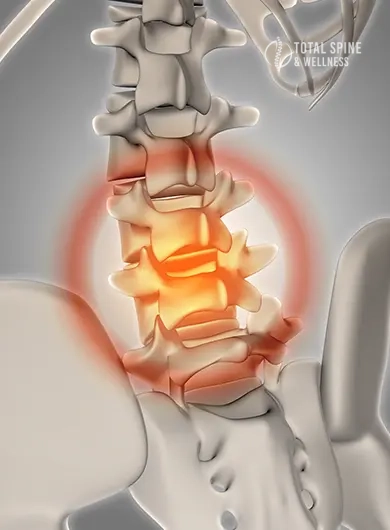
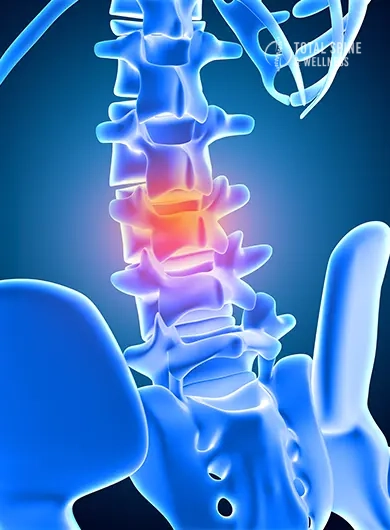
Frequently Asked Questions
1.Can spinal discs regenerate naturally?
Disc degeneration is a part of the natural aging process, and in most cases, spinal discs do not fully regenerate on their own. However, advanced regenerative medicine—like stem cells and PRP—can stimulate partial disc regeneration and reduce inflammation, offering pain relief and improved mobility.
2.What is the success rate of disc regeneration therapy?
While success varies, clinical studies show that many patients report a 40-70% reduction in pain and increased disc hydration after regenerative treatment. Factors like age, disc severity, and adherence to post-care guidelines affect outcomes.
3.How long do disc regeneration results last?
Results can last months to years, especially when combined with physical therapy and lifestyle changes. Repeat treatments may be needed in some cases.
4.Is disc regeneration better than surgery?
For many patients, yes. Disc Regeneration is minimally invasive, carries fewer risks, and involves no hospital stay. It’s an excellent first-line or intermediate option before considering major surgery.
5.How do I know if my spinal discs can regenerate?
If you’re wondering can spinal discs regenerate in your case, it depends on factors like age, disc damage, and overall health. A spine specialist can assess whether your spinal discs can regenerate with non-surgical treatments like PRP or stem cell therapy.
6.How to regenerate spinal discs naturally ?
While full regrowth of spinal discs is uncommon, many people can improve disc hydration, flexibility, and comfort naturally through daily movement, hydration, and anti-inflammatory nutrition.
For a full step-by-step recovery plan, see our detailed guide on how to regenerate spinal discs naturally.
Reclaim Your Spine Health Today
If you’re tired of temporary fixes and looking for a sustainable solution to back or neck pain, Disc Regeneration at Total Spine Wellness can help you restore function, reduce discomfort, and regain control of your life.
Take the next step—schedule a consultation with our specialists today.
Explore Disc Regeneration Treatment
